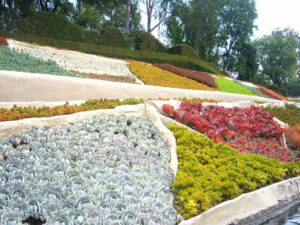Sustainability: Not as New as You Might Think
Then Esau took his wives, his sons, his daughters, and all the members of his household, his cattle, all his livestock, and all the property he had acquired in the land of Canaan; and he moved to a land some distance from his brother Jacob. For their possessions were too great for them to live together; the land where they were staying could not support them because of their livestock. So Esau settled in the hill country of Seir; Esau is Edom.”
Genesis 36:6-8
 I can’t quite remember when I first heard people talking about sustainability. I expect it was sometime in the last fifteen years or so. Now, I run into this word practically every day. (You may be interested to learn that Google’s Ngram Viewer, which measures the frequency of word usage in literature from 1500 through 2008, demonstrates an explosion of usage of “sustainability” in the last twenty years, after almost no use of the word prior to 1990.)
I can’t quite remember when I first heard people talking about sustainability. I expect it was sometime in the last fifteen years or so. Now, I run into this word practically every day. (You may be interested to learn that Google’s Ngram Viewer, which measures the frequency of word usage in literature from 1500 through 2008, demonstrates an explosion of usage of “sustainability” in the last twenty years, after almost no use of the word prior to 1990.)
These days, people talk about many things as being sustainable or not. But the core concept of sustainability has to do with the created world and the biological systems it contains. Our life on earth is sustainable if we are living in such a way that we can continue on indefinitely. If, on the contrary, we are living in a way that cannot be maintained indefinitely, then this is ultimately not sustainable.
I have brought up the notion of sustainability because, though it seems like a recent idea, in fact, concern about sustainable living is ancient. For example, we see this very concern in Genesis 36. In verses 6-8, Esau took his household and all of his possessions and left Canaan, settling in the hill country of Seir. Why did Esau move away from his brother, Jacob? The text says nothing about a rift between them. Rather, it says that “their possessions were too great for them to live together; the land where they were staying could not support them because of their livestock” (36:7). In today’s language, we would say that it was not sustainable for Jacob and Esau to live in the same location because their livestock would consume more from the land than the land could produce. Esau moved because of a concern about sustainability.
Why bring up sustainability in this devotion? Because, I believe, it helps us to see that a concern for sustainable living is modeled in Scripture. Stewardship of the land God entrusted to his people requires that we think about sustainability and make choices to guarantee it. Of course, the issues today are far more complex than they were in the time of Jacob and Esau. But a basic commitment to using the earth in a sustainable way should undergird our thinking about how we live and lead. After all, God has entrusted his world to us. Our responsibility is to care for it well, so that the world and its creatures might live fruitfully.
QUESTIONS TO CONSIDER:
When you hear the word “sustainability,” what comes to mind?
In what ways might your decisions as a leader reflect a commitment to sustainable living?
How does Scripture shape our understanding of sustainability?
PRAYER:
Gracious God, thank you for this world and for entrusting it to us as your stewards. Thank you for the resources and opportunities you have given us.
Thank you also for the example of Jacob and Esau in Genesis 36. They remind us to pay attention to how we are living and to make choices in the direction of sustainability. Give us wisdom, Lord, to know how best to use and care for the world you have entrusted to us. Amen.
Image Credit: “Patchwork Quilt at Storybook Land Canal Boats” by Loren Javier via Flickr, licensed under CC BY-ND 2.0.

Mark D. Roberts
Senior Fellow
Dr. Mark D. Roberts is a Senior Fellow for Fuller’s Max De Pree Center for Leadership, where he focuses on the spiritual development and thriving of leaders. He is the principal writer of the daily devotional, Life for Leaders, and ...


